Key points
• The purpose is different. A ceremony joins two people in marriage with vows and rings. A reception is an after-party where guests eat, drink, and dance to celebrate the new couple.
• The formality level changes. Ceremonies tend to be more serious and structured with careful timing and scripted words. Receptions are relaxed and fun with fewer rules.
• The cost varies greatly. Ceremonies can be cheap – just you, your partner, and an officiant at city hall. Receptions are more costly due to food catering, drinks, DJ or host, and venue rental.
Contents
Traditional Wedding Components
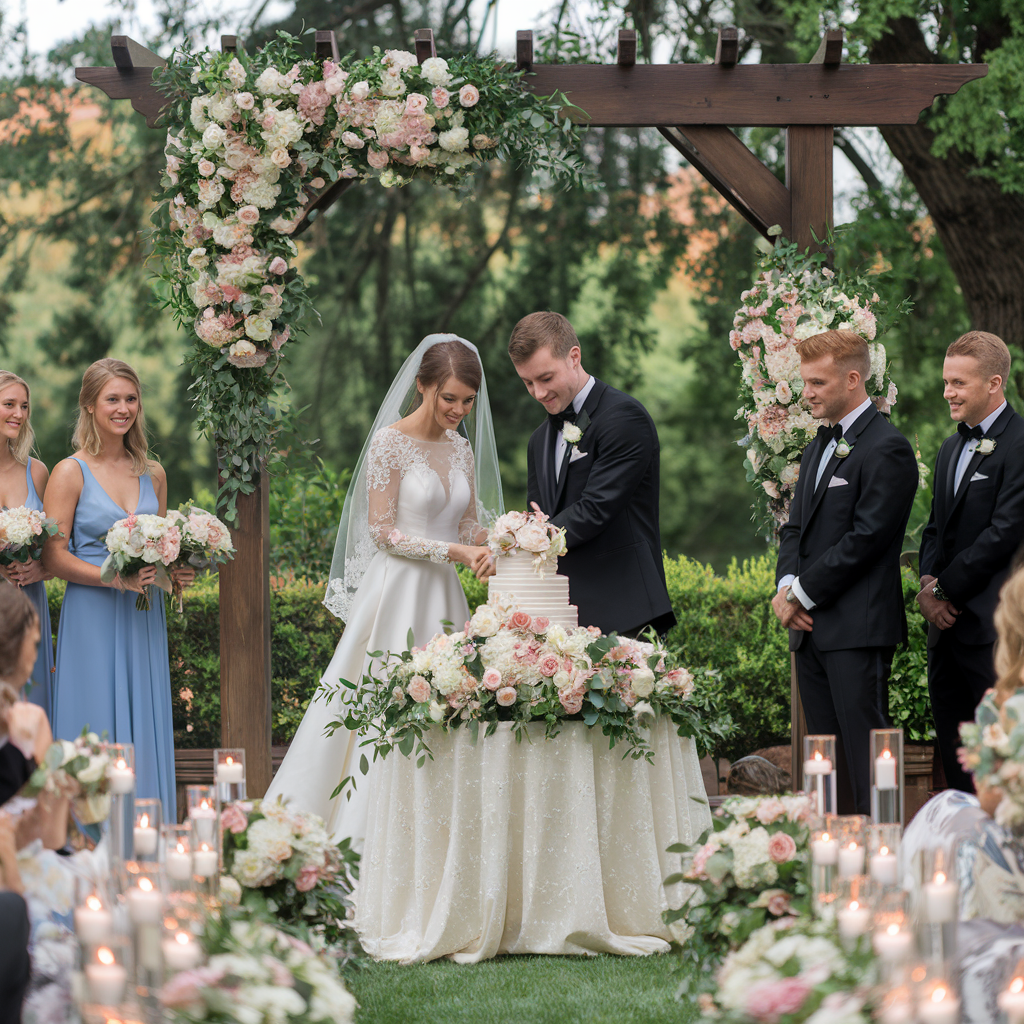
There are two parts to a wedding: ceremony and reception.
The wedding ceremony is the part where you say “I do” while the reception is the party afterward. Most ceremonies last about 30 minutes while receptions can go on for hours.
At the ceremony often have music, readings, and vows. The reception has food, drinks, dancing, and speeches. Both parts matter a lot but they serve different jobs in your wedding day story.
Wedding Ceremony: Core Elements
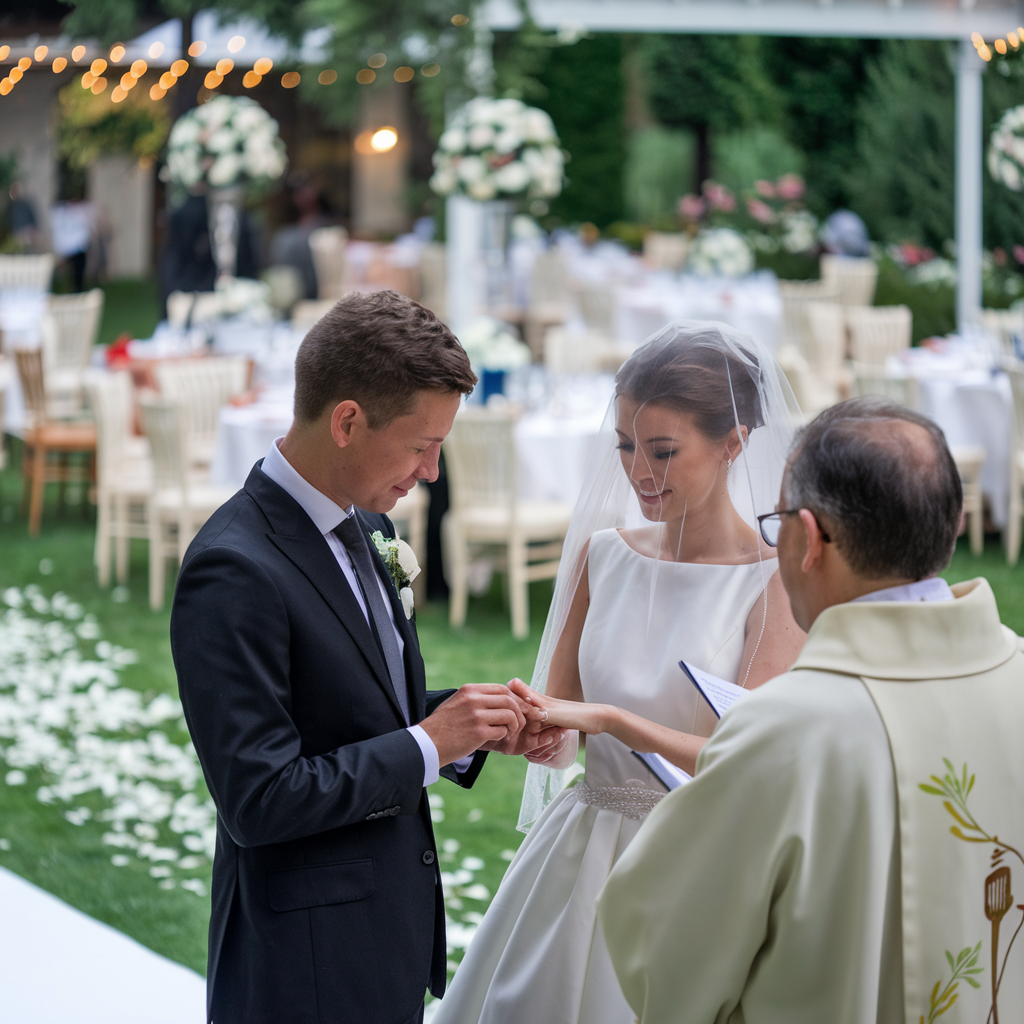
The wedding ceremony is the heart of your big day – it’s the part where you get married. Two people make promises to each other at a ceremony in front of witnesses.
At its origin a wedding ceremony enjoins two people declaring their commitment loud and proud. It marks your marriage journey legally, spiritually, and culturally.
Its main job is to join the couple in marriage through vows and symbols. Without it you’ll just have a fancy after-party without the customs and traditions.
Traditional and Contemporary Ceremony Formats
Wedding ceremonies come in all shapes and sizes. Traditional formats follow religious customs.
Catholic ceremonies are often held in a mass that lasts an hour. Jewish weddings require a glass to be broken and marriage to take place under a chuppah or canopy. Hindu ceremonies can last several days and include a lot of rituals like the Seven Steps.
But these days more couples pick contemporary formats for their short ceremony involving the exchange of personalized vows and mixing cultures.
Many couples choose “unity rituals” like lighting a candle or pouring sand while others include readings from books or movies they love. The best part? There are no rules.
Role of Officiants and Participants
The officiant runs the show during your ceremony. They guide the whole thing from start to finish.
A priest (rabbi) or imam runs religious ceremonies while civil ceremonies need judges, magistrates, or court clerks.
Beyond the officiant other key players are your family members, parents, and friends. Parents walk you down the aisle and give their blessings. Siblings might hold the rings or light candles. Friends collaborate together to create a beautiful moment that marks the beginning of your married life.
Other wedding staff stand by your side for support and offer some services such as sharing meaningful passages, creating the mood, and informing guests of their seats.
Wedding Reception: Core Elements
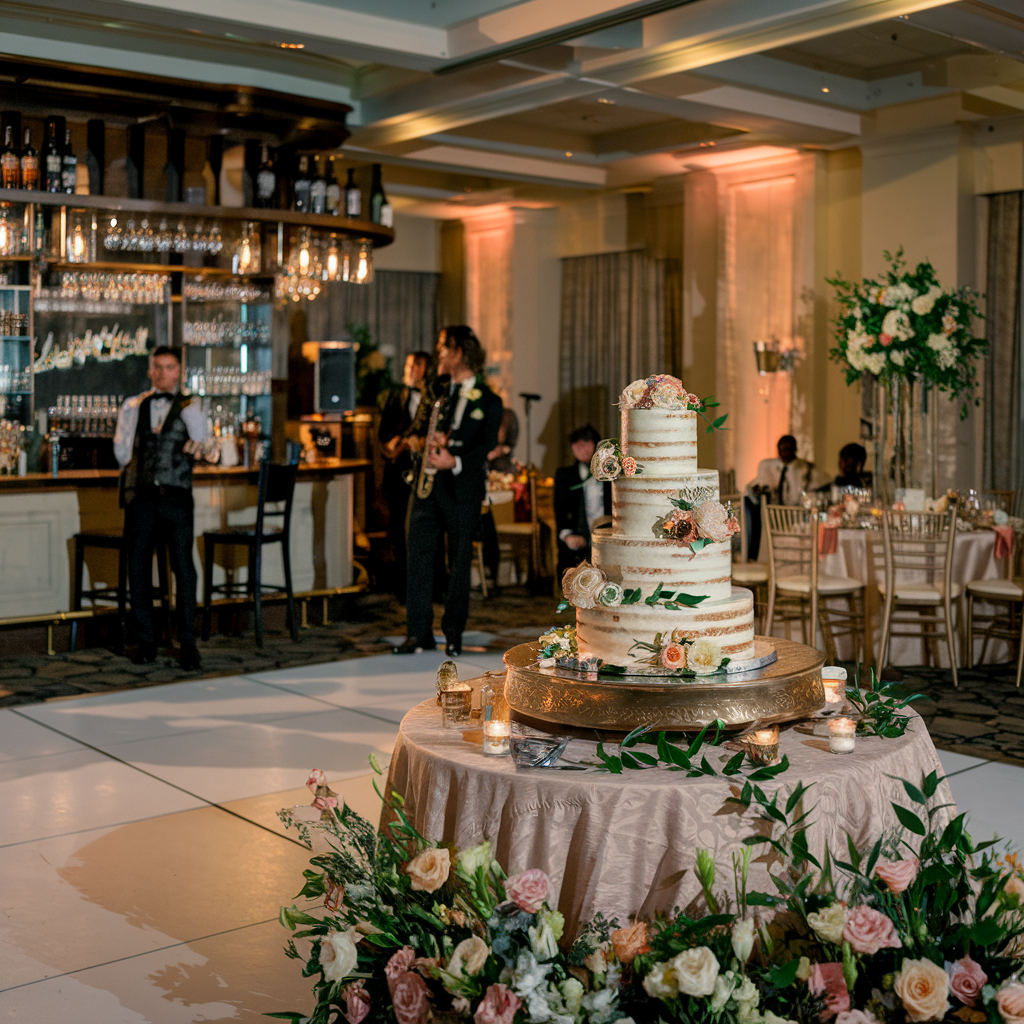
Reception is basically a grand celebration after the wedding. It’s where everyone celebrates the couple’s new marriage. It is more festive and communal than the ceremony.
The purpose? You bring your friends and family together to celebrate, eat, drink, and have fun. The newlywed couple gets to relax after saying “I do” and enjoy real moments together as newlyweds at a reception.
Reception Traditions and Variations
Every reception usually has some of the same parts but these may change depending on culture, family, or what the couple wants.
People usually have food most of the time. Most commonly a sit-down dinner, buffet, or finger foods. Contributing is something you need during this time.
There is also a cake-cutting event to symbolize the couple’s first task together. Some couples toss their bouquet and garter; although that’s less common lately.
When it comes to wedding receptions – different cultures add variations to the cake-cutting ceremony. For instance: Italian weddings include the “Grand March” dance in their celebration. There’s a Hora Chair dance at Jewish weddings.
Many couples are also skipping traditions they don’t like. They make it more personalized by coming up with new ones that suit them better.
Key players in a Wedding: Hosts, Guests, and the Service Staff
Different people have specific jobs at any reception. In the past the bride’s parents hosted and paid for everything. Nowadays it is a combined effort between both families or the couple.
The hosts take care of the site, decide on the menu, and run the show. The guest’s role is quite easy – turn up, contribute a gift, and enjoy.
The wedding’s best man and the maid of honor give a speech and help keep everything on track. But who are the real MVPs? The service staff: catering crew, bartenders, DJ/band, and venue coordinators who did all the heavy lifting.
The coordinator’s job is to keep everything on schedule so food is hot, speeches don’t go on as long as they can, and the couple gets to enjoy their own party.
Without this behind-the-scenes team – even the best-planned reception will unravel quickly.
Differences Between Ceremony and Reception

A wedding has two components: the ceremony and the reception.
These two serve different goals: the ceremony makes the marriage legal while the reception celebrates it with food and fun.
At its core ceremony joins two people legally and follows rules set by law or religion. The reception allows everyone to celebrate the new marriage without any rules.
Functions of Each Event
The ceremony makes the marriage real. It is home to the vows, the rings, and the official words that create the marriage bond. It usually takes 30 minutes or less and is the solemn moment.
The reception works differently. It celebrates what just happened. People eat, drink, dance, and talk for hours.
The mood of the ceremony and reception shifts from serious to fun.
Cultural and Personal Influences on Structure
The background shapes both parts of your wedding day. Some cultures focus more on one than the other.
For example: Indian weddings often involve multi-day rituals that have distinct meanings. West weddings might have long receptions but short ceremonies.
Religion affects things too. Catholic weddings are done in a church and usually follow a pattern. Jewish weddings have certain elements including the chuppah or the breaking of the glass. Couples whose ceremonies are less religious might keep it short and simple.
Family traditions matter a lot. Your grandparents might want you to go for their wedding cake topper. Maybe your partner’s family expects certain dances at the reception. These details make each wedding unique.
Timing and Sequence in Wedding Planning
Timing connects everything. Most couples book the ceremony venue first and find somewhere close for the reception as the venues should coordinate with each other in just the right amount of time.
A typical timeline works like this:
- Length of the ceremony: 30 minutes to 1 hour
- Travel/cocktail hour: 1 hour
- Reception: 4 to 5 hours
Weather affects planning too. Summer outdoor ceremonies might need shade or fans. Winter weddings need indoor heating and backup plans for the weather. All of these practical things impact the flow of your entire wedding day.
Integration of Ceremony and Reception
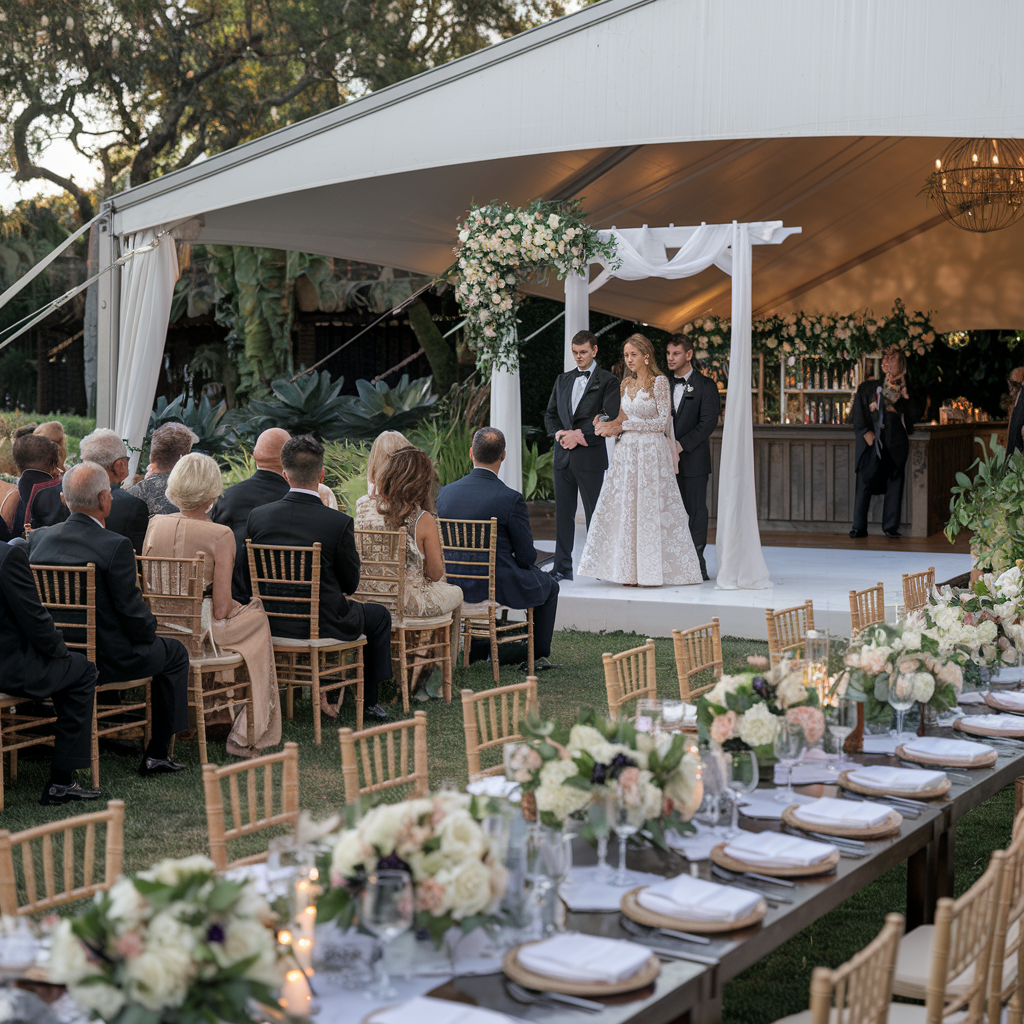
“I have attended weddings where the ceremony and the reception felt like two separate weddings and it’s not ideal.” says one wedding guest.
As a couple you want your guests to enjoy and feel that all things flow together like one big celebration. So it is essential to ensure that the transition from “I do” to dancing the night away is seamless.
Strategies for a Seamless Transition
The best weddings have no awkward waiting moments. Here are some ideas that work well:
Have drinks ready right after the ceremony. Your guests can grab a glass while you take photos. This keeps everyone happy and busy.
Music sets the mood. Choose songs that complement the vibe you want: soft jazz after the ceremony and peppy songs as the reception begins.
Hired entertainers for in-between time. You can opt for a string quartet while others may choose an artist to draw caricatures. This makes guests engaged in waiting for the actual reception.
Considerations for Venue and Logistics
When looking at venues think about the whole flow of the event.
Ask these questions: Can the same place work for both parts? Where will guests go during the changeover? Is the distance reasonable?
The answer to these questions can give you an idea of how long it takes to move from the ceremony to the reception venue or if the venue has a garden or a separate cocktail area to eliminate the guests’ boredom or any other issues.
Weather matters too. If you plan to hold the wedding ceremony outside and the reception is indoors then have a proper plan for rain. There should be a Plan B in case the weather is not good.
Balancing Formal and Informal Elements
While most ceremonies are formal – receptions tend to be more casual. This time the key factor is finding the right balance.
“I like how my cousin pulled this off. They had a church ceremony but served comfort food instead of fancy dishes! The mix of formal and casual felt just right” says one wedding guest.
Think about your dress code too. Will guests stay in the same clothes for both parts? If your ceremony is very formal but you want a relaxed reception – notify people that they can change.
Decor can help bridge these parts. Use similar flowers or colors in both spaces to create a visual link between your formal ceremony and the more laid-back reception that follows.
This gives guests cues on how to change their behavior from the solemn ceremony to a more relaxing and casual celebration event afterward.
Expert Insights
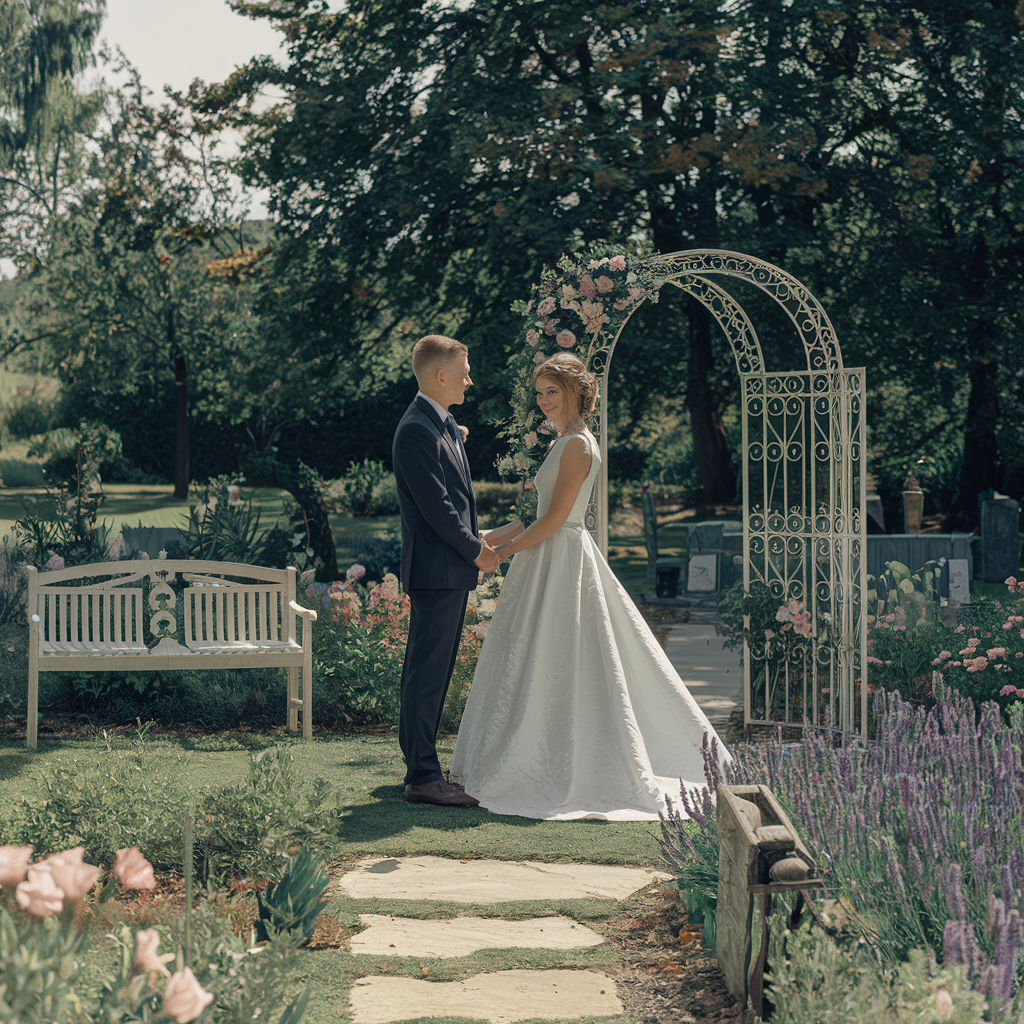
Wedding etiquette is fascinating; it’s a combination of the rules of the past and present practices. Let’s delve into what the experts say about ceremonies and receptions.
Insights from Anna Post and Lizzie Post
Anna and Lizzie Post are great-great-granddaughters of the etiquette queen Emily Post.
Anna Post shares “The ceremony is when you make your commitment. The reception is when you celebrate your commitment.”
So make your reception fit your personality. Don’t have super rigid rules but instead emphasize thinking about the guests.
Studies on Cultural Variations in Wedding Practices
Wedding customs vary around the world. There is no absolute rule that applies to a wedding ceremony or reception.
Researchers found that Western cultures practice two-part wedding days – an initial shorter formal ceremony and a longer and fun-filled reception.
Many Asian and Middle Eastern traditions blend these parts together in one continuous celebration. Modern weddings are filled with meanings because of this.
Expert Recommendations for Modern Weddings
Wedding planners and experts’ tips for today’s couples are:
- Choose 3-5 important elements to include in each section.
- Keep the ceremony “minimalist.”
- Try keeping the formal part for about 20-30 minutes.
- Put more energy into the reception.
Frequently Asked Questions (FAQ)
What are signature drinks and why include them in my reception?
Signature drinks reflect a couple’s love story or personalities by adding a personal touch to wedding receptions. Creating unique cocktails gives guests a taste of your relationship while providing a talking point during cocktail hour after the ceremony. This trending reception element creates lasting memories while guests mingle before dinner and dancing begin.
When should cake cutting happen in the wedding reception order?
This traditional task symbolizes the first thing you accomplish together as a married couple. Many wedding reception events follow a standard order but you can adjust the timing based on your DJ’s advice and your guests’ energy levels. Some can have it after the ceremony or once they arrive at the reception venue while some may do it after the guests have their meal. The key is choosing what’s best for you and the guests.
Should I hire a band, DJ, or magician for reception entertainment?
Your choice between a band, DJ, or specialty entertainment like a magician depends on your wedding budget, venue space constraints, and the atmosphere you want to create on your dance floor. A band creates live energy but costs more while a DJ offers playlist flexibility and often serves as the emcee for toasts and newlyweds’ entrances. Adding unique entertainment elements like a magician can provide memorable moments for guests.
What's included in most wedding packages for ceremonies?
Most wedding packages include ceremony venue access, chairs, basic décor elements, and an officiant to perform the marriage ceremony. Additional elements might feature unity ceremony supplies, sound equipment for vows, and a wedding website with planning guide resources. The detail level varies significantly between venues with some offering comprehensive ceremony packages while others provide only the essential space and leave extras to outside vendors.
How do I create a smooth transition from church to reception ballroom?
Provide clear directions between your church ceremony and reception ballroom on invitation details and on your wedding website using cookies or maps to guide everyone to the celebration. Consider transportation options for the wedding party and dearest friends if venues are far apart to ensure your loved ones arrive together for reception entrances. Plan the timeline carefully so guests don’t wait too long between events or perhaps offer light drinks or entertainment during this transition period.
What should be my priority when planning both ceremony and reception?
Your priority should be creating moments that honor your love story while ensuring guest comfort throughout both parts of your wedding day. According to event planner Jove Meyer: “Successful weddings blend personal significance with practical elements like guest lists, venue capacity, and realistic timeline planning. Keep in mind that your vows and the people sharing in your happiness matter more than any trendy wedding reception ideas or elaborate ceremony details.”

I am a free-spirited author with the focus of relationships, travel, mental health, and womanhood. I am still new to the writer scene but am excited for the journey that awaits.